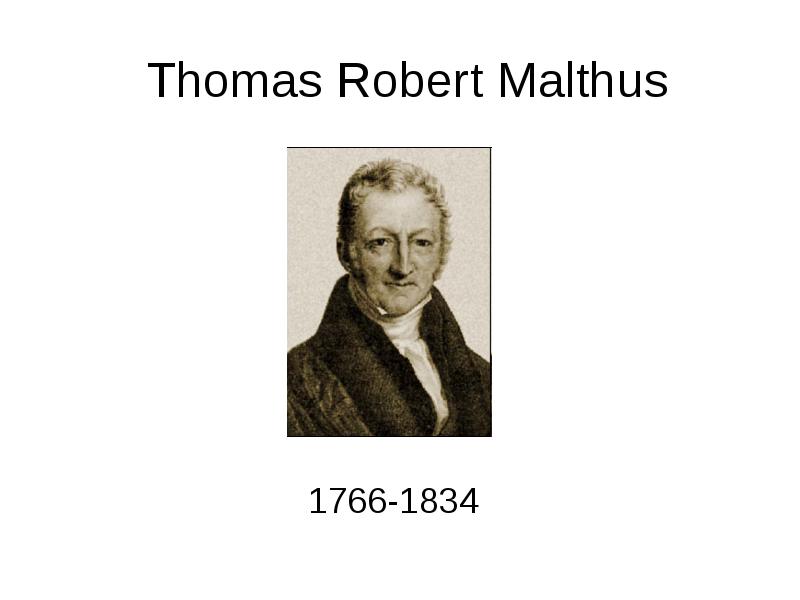| Line 2: | Line 2: | ||
The Malthus Doctrine, or Malthus Theory of Population Growth, was first introduced in a 1798 publication titled An Essay on the Principle of Population. It was developed by Thomas Robert Malthus, an English scholar. | The Malthus Doctrine, or Malthus Theory of Population Growth, was first introduced in a 1798 publication titled An Essay on the Principle of Population. It was developed by Thomas Robert Malthus, an English scholar. | ||
| − | + | [[File:Malthus.jpg|800px|frameless|right]] | |
| − | [[File:Malthus.jpg|800px|frameless| | + | |
| − | + | ||
Malthus’s doctrine discusses population growth, food supply, and the events that occur when population reaches a number past that which can be naturally sustained. He claimed that rapid population growth is dangerous because the supply of food and other resources grows at a much slower rate, causing population growth to become unsustainable. However, Malthus also claimed that there are ways to prevent unsustainability, which include both actions individuals could take and events that occur naturally to decrease population sizes to a sustainable level (Pepper). Though parts of his theory could still prove to be true, over the years there have been many criticisms of the Malthusian Doctrine because of his lack of accounting for several elements (Tushar). | Malthus’s doctrine discusses population growth, food supply, and the events that occur when population reaches a number past that which can be naturally sustained. He claimed that rapid population growth is dangerous because the supply of food and other resources grows at a much slower rate, causing population growth to become unsustainable. However, Malthus also claimed that there are ways to prevent unsustainability, which include both actions individuals could take and events that occur naturally to decrease population sizes to a sustainable level (Pepper). Though parts of his theory could still prove to be true, over the years there have been many criticisms of the Malthusian Doctrine because of his lack of accounting for several elements (Tushar). | ||
[[Category:MA279Fall2018Walther]] | [[Category:MA279Fall2018Walther]] | ||
Revision as of 23:13, 2 December 2018
Introduction:
The Malthus Doctrine, or Malthus Theory of Population Growth, was first introduced in a 1798 publication titled An Essay on the Principle of Population. It was developed by Thomas Robert Malthus, an English scholar.
Malthus’s doctrine discusses population growth, food supply, and the events that occur when population reaches a number past that which can be naturally sustained. He claimed that rapid population growth is dangerous because the supply of food and other resources grows at a much slower rate, causing population growth to become unsustainable. However, Malthus also claimed that there are ways to prevent unsustainability, which include both actions individuals could take and events that occur naturally to decrease population sizes to a sustainable level (Pepper). Though parts of his theory could still prove to be true, over the years there have been many criticisms of the Malthusian Doctrine because of his lack of accounting for several elements (Tushar).


